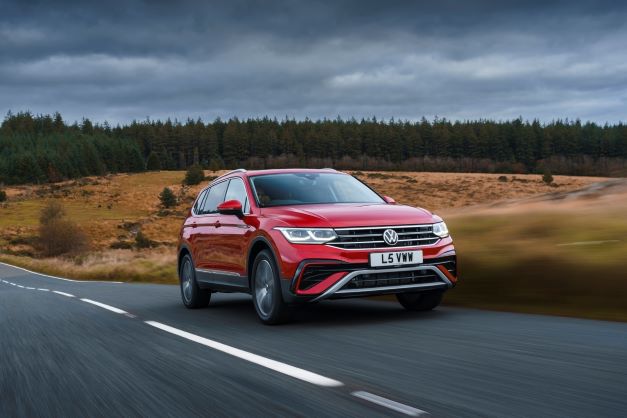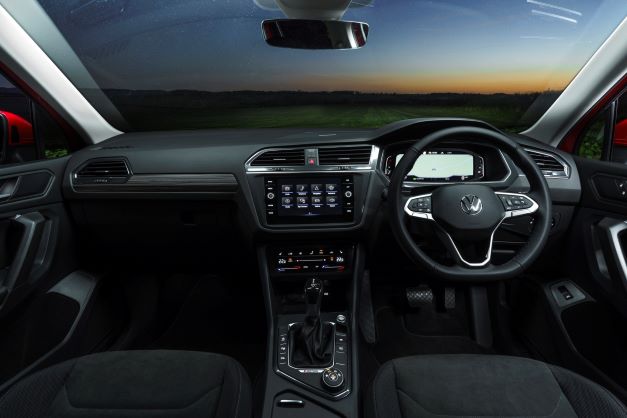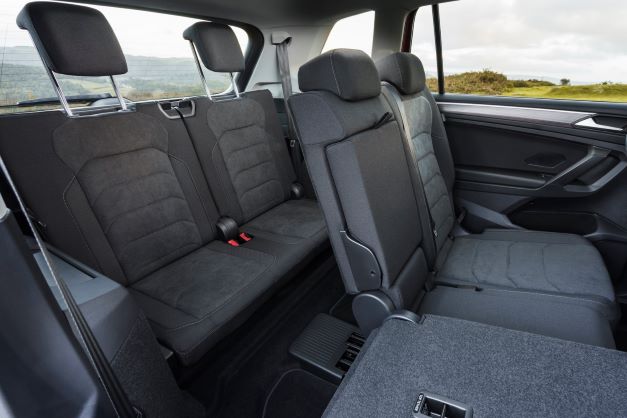
Inside story
The cockpit is jam-packed with tech set out logically thereby making it easy to find your way around. It includes the carmaker’s latest-generation infotainment system, itself based on the brand’s Modular Infotainment Platform (MIB3).
Seating-wise, the heated front velour seats incorporate height and lumbar adjustment, and handy under-seat drawers. The sliding second-row rear bench seat features 40/20/40 split-folding backrests and an armrest incorporating two cupholders. Behind that is the third row of seats that can also fold flat in a jiffy. The rest of the cabin is speckled with chrome and decorative inserts in dash and door trim panels, carpet mats (front and rear), stainless steel pedals and door sill protectors.
Storage-wise, some 1,755 litres of luggage space is available with the two rear rows of seats folded, or 760 litres with only the rearmost two seats flat. The felt-lined front door bins are large enough to store a 1.5-litre bottle with further storage compartments in the luggage area and rear doors. Plus 12V sockets in the centre console storage area, luggage compartment, and rear of the front centre armrest.
The air-con is also worthy of note. The three-zone system incorporates an air filter, controls at the rear and three-zone temperature control. All air conditioning, heating and ventilation functions are operated via a new digitalised module in the centre console. Touch panels take the place of rotary knobs and buttons. The first of three levels accommodate the direct access buttons for frequently used functions such as seat heating, defrosting windscreen and air recirculation. The middle level includes the temperature displays and a slider for the blower speed. On the bottom level, two sliders for setting the temperature.

Connectivity
The Allspace’s Online Connectivity Unit brings the online services of We Connect Start into the car. Highlights of We Connect Start include navigation and a variety of vehicle-related services. Online Traffic Information services provide the driver with details of the situation on the selected route at any one point, along with any potential hazards. Meanwhile, the Charging Stations service helpfully offers live data on available charge points in the vicinity and details on their charging capacity, including tariff costs.
Level 2 driving automation
Having debuted in 2019 on the Passat, Travel Assist now features on the Allspace enabling Level 2 driving automation that can accelerate, brake and steer for you on motorways.
The feature combines the functions of existing systems such as adaptive cruise control (ACC) and the lane assist lane-keeping system. Kerbs and grass verges are now recognised in addition to painted lines on the road. It is activated using the multifunction steering wheel while for legal and safety-related reasons, drivers must permanently monitor the system – meaning that they must have at least one hand on the steering wheel. Thanks to capacitive sensor technology in the steering wheel, the driver just has to touch the wheel. If the system calculates that they have let go for more than 15 seconds then visual and audible warning signals kick-off plus a braking jolt to act as a warning to regain control. The driver must react by this point and touch the steering wheel, otherwise Emergency Assist is activated and the car is brought to a stop.
The carmaker’s third and latest generation ACC function is now predictive, automatically adjusting speed for permanent and temporary speed limits, as well as slowing for junctions and corners. It is fed by both GPS and road sign recognition. This means the system calculates the position of the Allspace based on route and GPS data from the navigation system to lower its speed before reaching bends, roundabouts, junctions, speed limits and built-up areas. At the same time, ACC accesses the Dynamic Road Sign Display via the front camera and adjusts the speed as soon as a limit has been detected.
Other ADAS functions include lane assist (to help prevent the car from unintentionally crossing lane markers on the road), emergency assist (attempts to alert or wake the driver by steering jerks and, if this fails to generate a response, an emergency stop is initiated), side assist (monitors traffic behind the car with the aid of the car’s rear radar systems, specifically targeting ‘blind spots’) and front assist. The latter monitors the area in front of the car using a camera. It reacts to potential imminent collisions via warnings and, if required, braking interventions. Meanwhile, Allspace’s oncoming vehicle braking when turning function monitors the opposite lane when turning off, issuing a warning and/or braking the car automatically if it anticipates an emergency. Swerve support helps the driver to navigate obstacles in the road by providing the corresponding steering interventions, and to avoid minor parking collisions, the standard audible park distance control has an integrated manoeuvre braking system.

On the road
Three trim levels are offered in the UK, starting with Life, through Elegance to R-Line designation. Our top-drawer R-Line press review provided a firm ride on 20-inch wheels. Powered by a 2.0-litre turbocharged petrol unit with a seven-speed DSG automatic gearbox, it averaged 30 mpg compared to the official combined test cycle of 33 mpg. More understated and less flamboyant than its rivals, this practical, roomy family car is packed with connected technology to keep everyone content while on the road. Rival models include the Kia Sorento, Skoda Kodiaq and SEAT Tarraco.
Last year, 36 per cent of sales for Tiguan Allspace were retail and 64 per cent fleet. Tiguan is the third best-selling vehicle in the Volkswagen range in the UK, with sales of 24,031 in 2021, of which 3,225 were the Tiguan Allspace (Polo was the best-seller with sales of 30,631 in 2021). Total sales in the UK in 2021, including passenger-carrying CV models, were 147,787. The top-selling Tiguan Allspace in the UK is expected to be the Life 150 PS TSI 7-speed DSG.
